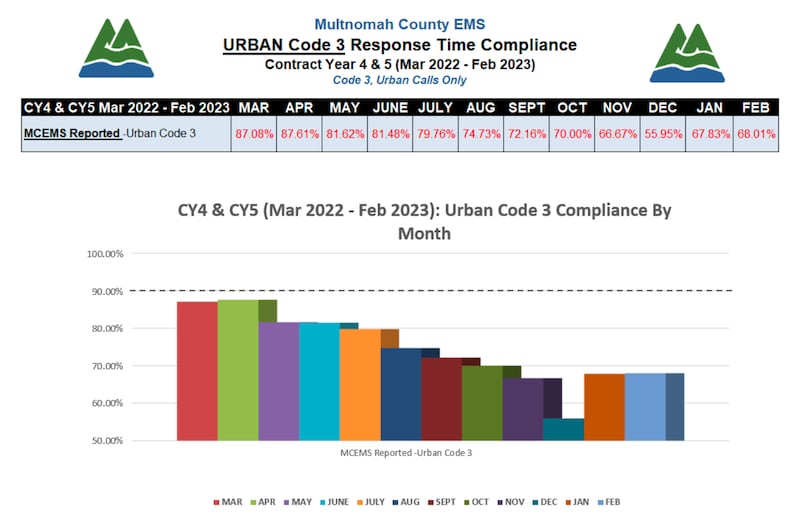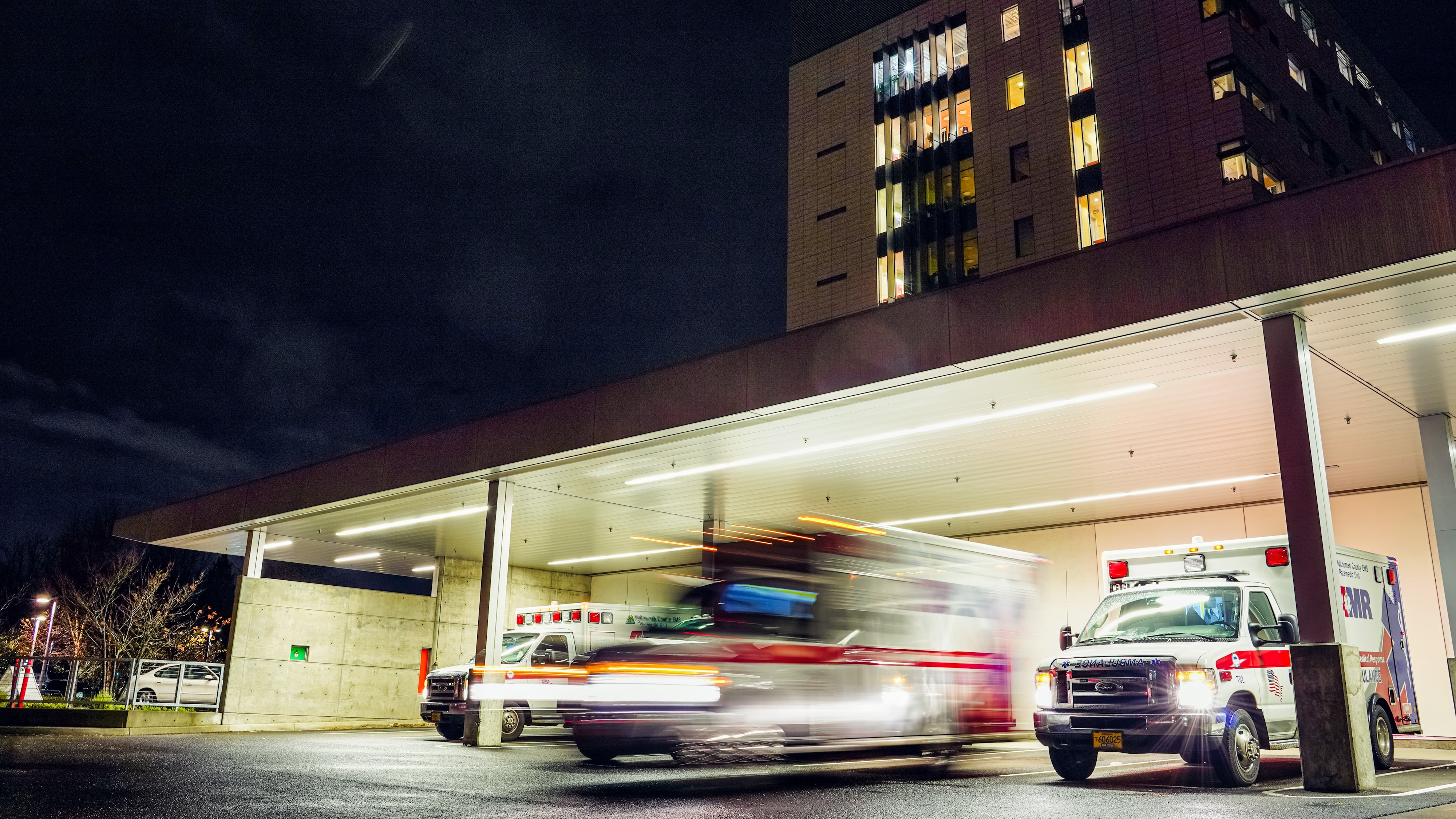Over the past six months, the percentage of “late” ambulances in Multnomah County has skyrocketed.
For the six months prior to March, ambulances arrived late to medical emergencies 28% of the time, according to a recent county report obtained by WW. That means nearly 16,000 ambulances were late, a 100% increase from the prior six months.
In urban areas, ambulances are expected to respond to life-threatening calls—“Code 3″—within eight minutes. Last March, they did so 87% of the time. By this February, that percentage had fallen to 68%, according to the report.

The new numbers, released to WW this morning, confirm previous reporting by KGW-TV that ambulances in Portland arrive late, sometimes long after firefighters appear at emergencies.
Multnomah County has a contract with American Medical Response to provide ambulance service, and AMR has blamed staffing issues for its poor performance. “The most significant impact on our compliance and mandatory overtime for our first responders has been an extreme nationwide paramedic staffing shortage caused by the pandemic,” AMR said in a statement to WW.
AMR has been lobbying to eliminate a county requirement that every ambulance be staffed with two paramedics. “A temporary change to our staffing model to paramedic/EMT, which is the Oregon standard used by all counties surrounding Multnomah, would mitigate the impacts of these shortages,” the AMR spokesperson added.
For its part, the county has said AMR is not to blame and has yet to fine the contractor for its failing performance. “What we’re experiencing now in Multnomah County—and what we have experienced since 2020—are not really within AMR’s control. The pandemic wasn’t in their control, nor was the subsequent national workforce shortage,” said Aaron Monnig, the county’s health officer operations manager, in a statement to WW.
AMR’s contract with Multnomah County expires this year. “We are working to bring AMR into compliance, initially with the AMR staffing correction plan,” Monnig added.
The report provided to WW was a “six-month review” by the county’s Contract Compliance Rate and Regulation Committee. Along with the dismal statistics, it provided a “timeline of interventions and system-level changes.”
That timeline notes that AMR submitted a “staffing improvement plan” last summer and lists a series of pilot programs that the county has implemented to help address the ambulance shortfalls. It’s begun sending out “Basic Life Support” ambulances staffed with emergency medical technicians, not paramedics. It’s also begun triaging low-priority calls.
“We then put those calls in a queue where an AMR paramedic will follow up on the phone and we won’t dispatch an ambulance resource until we ensure there are enough ambulances available to respond to the rest of the county with higher-acuity calls at that time,” Monnig said.

